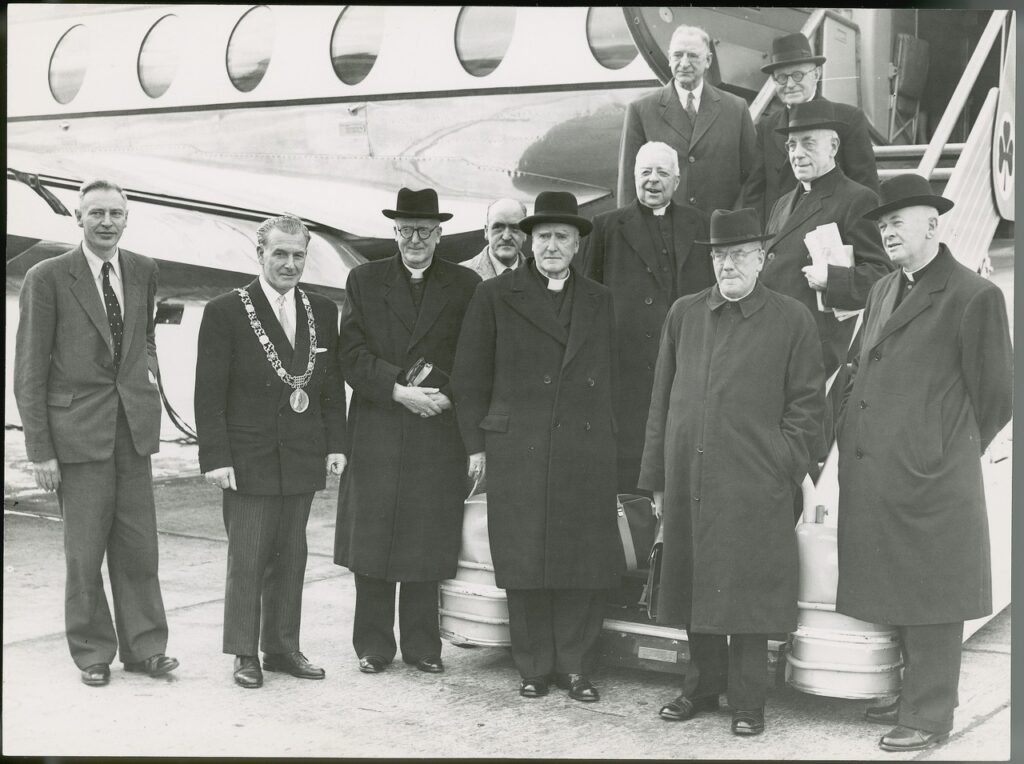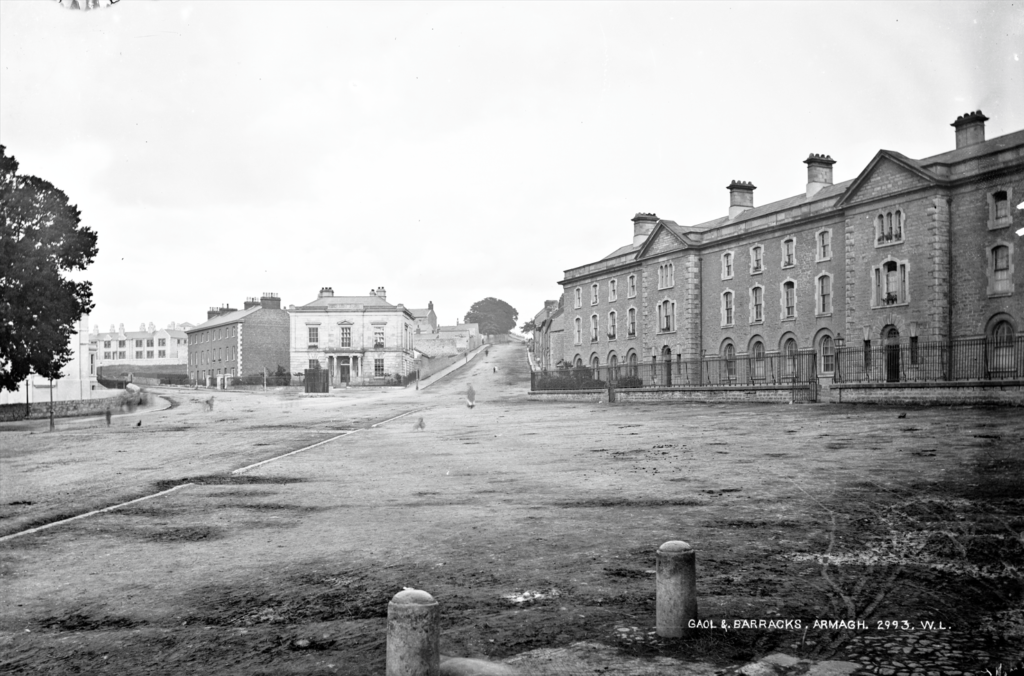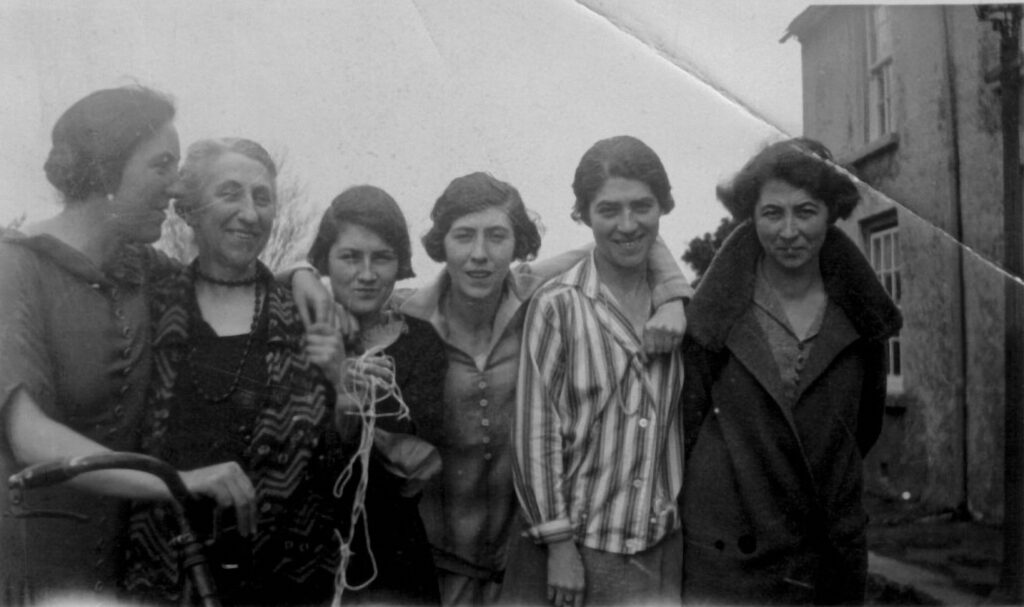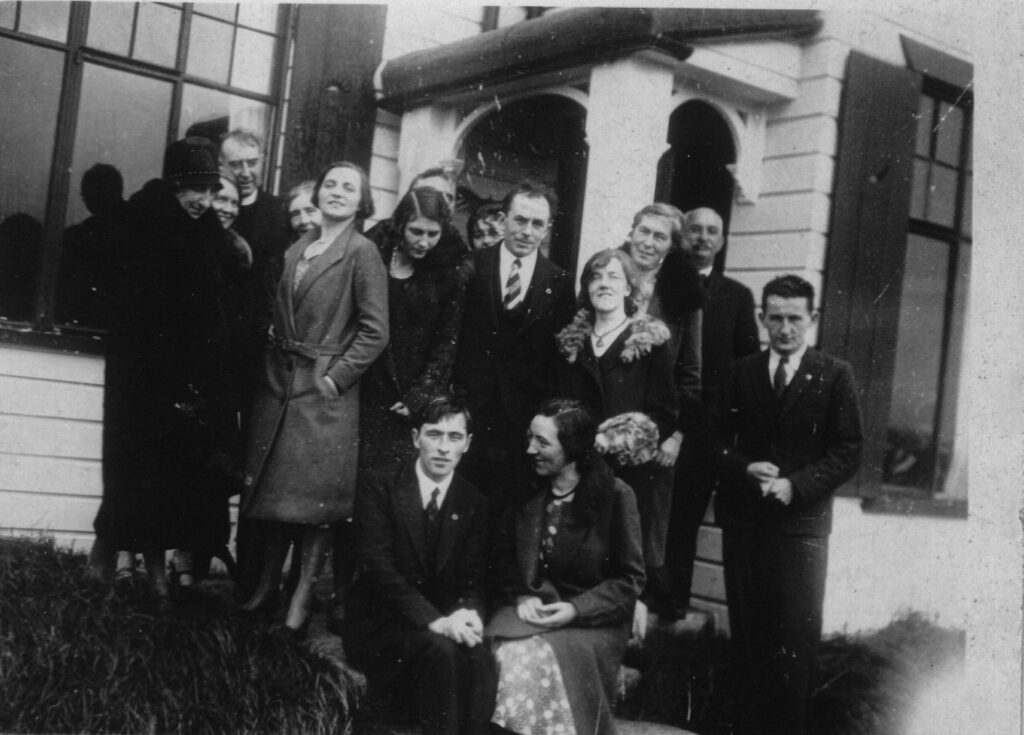By Eoin Magennis and Lesa Ní Mhunghaile

Nano Aiken’s 1934 application for a military service pension named two unlikely referees for the 1923 period of service. One was Monsignor Eugene O’Callaghan, chaplain to Armagh Gaol and later bishop of Clogher. The other was Sir Dawson Bates, minister for Home Affairs in the Northern Ireland government. The reason Nano gave was that she was interned in Armagh for much of 1923 and these two men could best attest to that. Her experience in that year, as the Civil War in the South ended and repression continued in the North, was part of the tide going out for republicans in Ulster after 1922. It was a time when the revolution in the North came to an abrupt end.
INTERNMENT IN NORTHERN IRELAND
The power to intern suspects without trial came with the passage of the Special Powers Act in April 1922 by the Unionist parliament. Dawson Bates was also empowered to ban organisations and public meetings, exclude people from living in designated areas, whip or execute those found guilty under the act and impose curfews. An emergency act, it was supposed to last a year but persisted long after.
The Northern Ireland government activated internment on 22 May 1922 and banned Cumann na mBan, the IRB, the IRA and Na Fianna Éireann. Within 24 hours more than 200 suspects were rounded up, all nationalists or republicans, and another 80 within weeks. The official tally up to the end of 1924 was 732 people arrested and interned at some point. A further 200 may have been excluded from Northern Ireland or escaped before an order was served. The internees were held in prisons, such as Armagh Gaol, as well as on the prison ship Argenta and in Larne Workhouse. Similar powers were used in the Free State, and by the end of the Civil War close to 12,000 were held in prisons or in army camps like the Curragh.

INTERNMENT OF WOMEN
Women were also interned on both sides of the border. During the Civil War more than 500 women were detained in Kilmainham, Mountjoy and the North Dublin Union. In the North, Nano and eight other women were interned in Armagh Gaol between May 1922 and May 1924, a much smaller total and proportion than in the Free State. Three of the nine women were from Belfast, two from Tyrone, and one each from Fermanagh, Down, Armagh and Dublin. Most were held for short terms, less than six months, and usually released on the grounds of ill health or agreeing to conditions set down by advisory committees. Their internment files show a dislike of female activism, beyond a fear of republican danger, but also a desire not to hold them for long. In the case of Róisín Ní Beirne, a neighbour of Nano’s whose internment order was refused, she was regarded as a dangerous person. However, General Tudor, military adviser to the Northern Ireland government, ordered that ‘there are objections to the internment of women unless on very strong grounds’ and said that she should be watched closely.
This attitude to women internees can be seen in the case of the most famous one, Winifred Carney. She had fought in the GPO in 1916, as a member of the Citizen Army, but was released from Armagh Gaol only weeks after her arrest in July 1922. Her internment order was ignored after a fine was paid for her, owing to concerns about her health and a campaign by trades unionists.

ROAD TO ARMAGH GAOL
Nano Aiken was born in 1896 near the village of Camlough in south Armagh. Her family was prosperous, her father a farmer, builder and Nationalist councillor. Her younger brother Frank would become a local IRA leader, then chief of staff of the anti-Treaty IRA after the death of Liam Lynch, and finally a Fianna Fáil TD and minister in successive governments up to 1968. Nano was effectively independent after her parents died in her teens. She was involved in local Gaelic League branches, attended the Coláiste Bhríde summer school in Omeath in 1915 and 1916, and moved in separatist circles. By January 1918 she and revivalist friends had established a Cumann na mBan branch in Camlough.
Nano remained in Cumann na mBan but later recorded that she was ‘under instructions not to take any rank’. She appears to have been closely involved in the military work of the IRA, as her family home became an operational centre. This included carrying dispatches, transporting arms and, if another account can be believed, taking an active part in stopping trains on the Belfast/Dublin line in 1920. In her pension application Nano distinguishes her service from 1920 as ‘working directly’ with the 4th Northern Division command, her referees all being staff officers of the division. The British Army’s destruction of her family home in December 1920, after an attack on the local RIC barracks, saw Nano go on the run with local IRA men.
Nano’s account records that she ‘moved with the [flying] column into every district into which they went’ even during the Truce period, which barely applied in the North. This meant staying in safe houses and with Cumann na mBan comrades in south Armagh and north Louth, with the risk of regular raids, often violent ones. From April to July 1922 Dundalk military barracks briefly became home, as it was the HQ of the 4th Northern Division. As tension grew ahead of the Civil War, Nano moved into the Louth camps of Northern IRA men in Dungooley and Ravensdale. With Frank Aiken’s reluctant joining of the anti-Treaty side, Nano once more moved from house to house on either side of the new border.

INTERNMENT IN ARMAGH GAOL
In January 1923 District Inspector McFarland made an application under the Special Powers Act for an internment order for Nano Aiken. His application accused her of being a significant and clever foe, carrying dispatches across the border for the anti-Treaty IRA, without occupation or fixed address, and moving freely through a network of sympathisers. Nano was arrested on the evening of 13 February 1923 near Camlough and immediately moved to Armagh Gaol. In her possession were cheques worth £150, correspondence about republican prisoners and copies of anti-Treaty newspapers.
Armagh was one of the larger regional prisons, holding up to 125 prisoners. Since April 1918 it had been for women only, with reportedly harsh conditions typical of a prison almost 150 years old. Prisoners had to work at knitting, needlework and washing and were punished for refusing. After 1922 there was no difference in treatment for prisoners held for political reasons. In 1920 Linda Kearns had been in Armagh and said that she was able to order dinner from a hotel, was allowed visitors and exercise when she wanted, and had her own room. Winifred Carney complained in July 1922 that she was being dealt with as an ordinary criminal: confinement to cells, no visits and no parcels from outside.
Nano was described initially as a difficult prisoner and had no visitors for eight months. Thereafter her sister May, Catholic chaplains, her solicitor and a prison-approved dentist were her occasional visitors. Between September 1923 and March 1924 she had Lizzie Keown from Fermanagh as a fellow internee. Nano applied for parole to attend several funerals and a court case in Newry. She was refused permission to go to the funerals and refused herself to go to the court under police guard. A small number of letters to her cousin Sheila McGeeney are largely replies to news from the outside world and do betray a strong sense of loneliness. They also shed some light on her conditions, the sharing of cells, often with mice and rats, poor diet and being unable to mix with others. The letters hint at a slight loosening of conditions after her first year of internment, with some greater freedom of movement.
Nano refused to appear before the advisory committee and abide by its conditions not to be politically active upon release or to opt for deportation out of Northern Ireland. Lizzie Keown did so and was released on her second attempt. By March 1924 there was public criticism of Nano’s situation as the sole female internee, both from Newry Urban District Council and, at Westminster, by a Labour MP, John Scurr. The Home Affairs memos betray frustration at a fanatic who would probably break any conditions and have to be re-arrested, but Nano’s significant loss of weight and growing ill health decided the matter. She was unconditionally released in May 1924.
There might have been a final twist to this internment tale. In April 1924 Tom Rogers, O/C of the depleted 4th Northern, sent word to Armagh City that Nano was to be rescued. Roger’s optimistic belief was that ‘Miss Aiken’ was able to move about the prison with little supervision and could be sprung as a package was delivered to a side gate. She would be taken by car to a hideout at a farm outside the city and the car abandoned on the Armagh/Monaghan border. Nano was told the plan by a trusted chaplain but, in the event, she did not step forward and a wardress slammed the gate closed. In later discussions local IRA veterans pointed out that the authorities had long worried about attempts to break her out and applied special conditions to her visits.
AFTERMATH
After her release Nano remained politically active for at least another decade. Police reports detail her involvement in prisoners’ campaigns and as election agent for republican candidates in South Armagh in 1924 and 1925. In both election campaigns Nano addressed meetings which turned violent and were broken up by the RUC. The 1925 Stormont election saw Éamon Donnelly surprisingly elected, defeating the Nationalist MP, John Nugent. Nano strongly supported his position of abstention from the ‘Belfast parliament’.
Nano remained involved in the language movement and was elected in 1926 to the committee of Comhaltas Uladh, where she worked with her future husband, Phelim Magennis. After family life began in 1930 Nano still made time to attend Cumann na mBan and Republican Congress meetings in 1933 and 1934. She fought for recognition of her own service during the revolution, making a terse pension application in December 1934. She also struggled to get her comrades’ work recognised and organised the processing of local applications, as well as signing a 1938 complaint from Old Cumann na mBan that only women with Easter Week service seemed to be qualifying. Her brother Frank’s view that gender was a bar to significant military service during the revolution was not one that Nano shared.
When Nano died on 16 September 1972 these details of her earlier life were shared with very few people and remained in the archives. Even as these have emerged her own voice is muted, a stark pension application barely added to in a 1938 interview. What we are to make of this is hard to know. It may have been that she wanted only recognition of service as opposed to financial rewards. Or perhaps, being marooned in Northern Ireland (an entity that she studiously ignored for much of her life), Nano regarded her cause as a defeated one, despite her brother’s going on to exercise power in the South.
Eoin Magennis is Principal Economist in the Ulster University Economic Policy Centre and grandson of Nano Aiken; Lesa Ní Mhunghaile is a lecturer in Irish in the University of Galway.
Further reading
D. Hall & E. Magennis, Armagh: the Irish revolution (Dublin, 2024).
D. Kleinrichert, Republican internment and the prison ship Argenta, 1922 (Dublin, 2001).
F. McCluskey, ‘Alice Mallon: “A very bad type of woman”’, in D. McAnallen (ed.), Reflections on the revolution in Ulster (Armagh, 2017).
